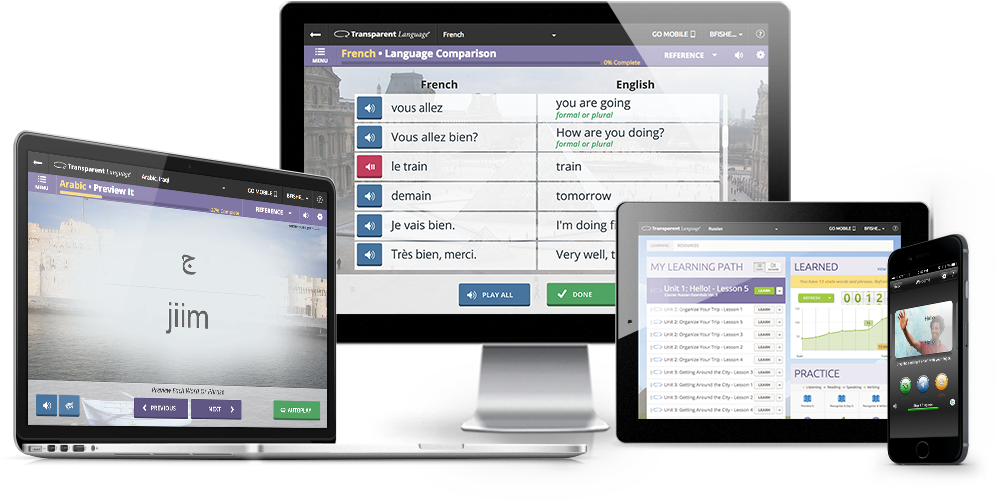Can Tech Enable Schools to Start Offering Languages Earlier? Posted by Transparent Language on Mar 1, 2017 in Archived Posts
Educators and researchers agree: children should start learning languages as early as possible.
Children Are Uniquely Suited to Learn Languages
Recent research indicates that our “capacity to learn a language diminishes gradually” over time. At younger ages, children’s brains are more open to new sounds and patterns: “Simply, the younger the learner, the better they are at mimicking new sounds and adopting pronunciation.” Very young learners are also less likely to be hampered by their own self-consciousness or embarrassment at making mistakes.
Of course, languages can be learned at any age. But children have unique advantages that fade with age. To raise the next generation of global citizens ready to compete and collaborate in a globalized world, introducing languages as early as possible is critical.

So, why aren’t we teaching a second language in most public elementary schools?
There is no one right answer to this question. Historically, it was widely believed that introducing more than one language at an early age would disrupt the acquisition of the primary language, in this case English. Perhaps the vestiges of that belief still live in our public school curricula, in which languages are often not introduced until middle or even high school.
Perhaps districts are distracted by the need to meet standardized testing requirements in reading, writing, and math, or the recent emphasis on STEM subjects. (Though we know now that languages are critical in STEM fields, right?) We’ve seen programming languages take precedent over foreign languages in some school districts in 2016.
Or, equally likely, it could be a matter of funding and budget cuts, the shortage of language teachers, or a combination of all of the above factors.
How can U.S. public schools offer foreign languages in elementary school?
According to a 2015 study by Houghton Mifflin Harcourt, 98% of classrooms have one or more computers and nearly 60% have laptops available for students. With 88% of school districts now also online, and that number growing at a stunning rate in the last three years, it’s time to look to technology to fill the gap in our language curriculum.
From YouTube to foreign news sites, the internet is a virtual treasure trove of language learning resources. Of course, schools can’t just let students lose on the internet to learn a language. That’s where self-guided courses and virtual instructors come in. School districts can leverage these online programs to introduce languages earlier without hiring a full staff of on-site teachers, finding classroom space, buying textbooks and other materials, and building their own curriculum.
 Take East Kingston Elementary School (EKES) for example. Located in southeastern New Hampshire, EKES wanted to prioritize languages in its curriculum, but lacked the space and the budget to employ multiple instructors. By leveraging its computer lab, EKES has been able to offer their 4th– and 5th-graders the opportunity to learn a languages much earlier in their curriculum. While currently offering Spanish and French, the school has also offered Vietnamese, Portuguese, and Italian in previous years based on student interest. While we provide two separate language teachers, the school has only hired one instructor who serves as a tech advisor and classroom supervisor. She can be leveraged across more languages than she could instruct on her own, maximizing the school’s offerings and minimizing their costs.
Take East Kingston Elementary School (EKES) for example. Located in southeastern New Hampshire, EKES wanted to prioritize languages in its curriculum, but lacked the space and the budget to employ multiple instructors. By leveraging its computer lab, EKES has been able to offer their 4th– and 5th-graders the opportunity to learn a languages much earlier in their curriculum. While currently offering Spanish and French, the school has also offered Vietnamese, Portuguese, and Italian in previous years based on student interest. While we provide two separate language teachers, the school has only hired one instructor who serves as a tech advisor and classroom supervisor. She can be leveraged across more languages than she could instruct on her own, maximizing the school’s offerings and minimizing their costs.
Working with Transparent Connect, a combination of self-guided online courseware and live sessions with a virtual instructor, EKES employs a flipped classroom approach. Students complete structured language lessons before meeting with their instructor, so they arrive to each hour-long session already familiar with the materials. “Classroom” time can then be spent producing the language through fun activities including roleplaying or quiz show games. This model allows students to learn at their own pace and increases their digital literacy, another critical skill in today’s world of digital communications.
The program at East Kingston Elementary is in its 5th year, a testament to its success in engaging young students in languages at an affordable cost.
Does your school district offer foreign languages as early as elementary school? Learn more about Transparent Language Online and contact us to hear about our work with K-12 schools.


Build vocabulary, practice pronunciation, and more with Transparent Language Online. Available anytime, anywhere, on any device.




Comments:
Russian Professor:
I agree with this text. It`s very important for children to start learn foreign language earlier. The one of great idea is to learn foreign language with Lozanov method.